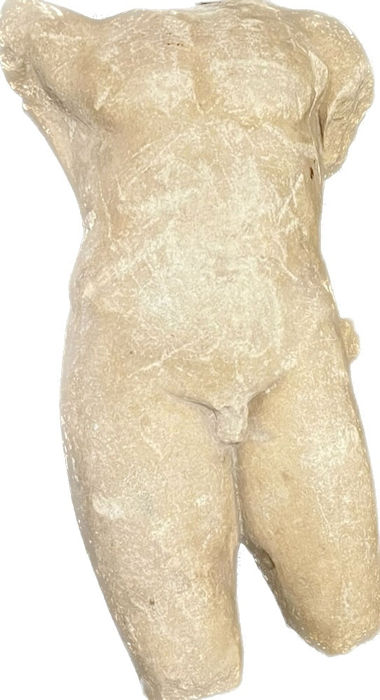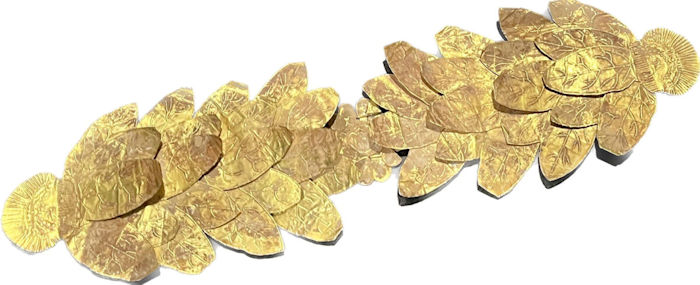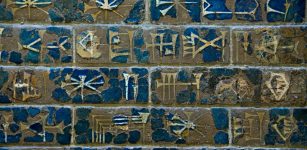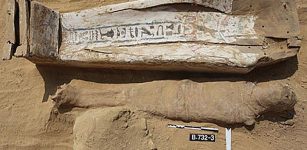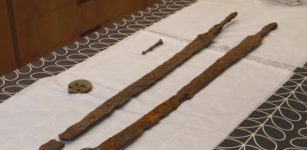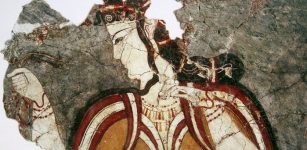15 Precious Ancient Objects Returned To Greece From Switzerland – Antique Dealer Charged With Trafficking
Conny Waters - AncientPages-com - The Geneva court has ruled 15 ancient objects will be returned to Greece from Switzerland. Criminal investigations reveal the ancient artifacts were illegally in possession of a well-known antique dealer.
Attic black-figured column krater attributed to the team of the vase painter Lydos. The main scene depicts Hercules fighting the centaur Nessus. Credit: Ministry of Culture and Sports
The items consist of figurines, clay, and copper vessels, a gold diadem with laurel leaves, a torso of a naked male, a bronze statuette of a naked athlete, a pair of bronze anklets, and a silver coin.
The Ministry of Culture and Sports informed in a press statement that these objects were under precautionary seizure by the Geneva authorities. The Ministry of Foreign Affairs, after being informed by the Consulate General of Greece about the case, appointed a lawyer to take all the necessary actions to gain access to all the objects that were under seizure.
Clay rhyton in the form of a wild boar head. Credit: Ministry of Culture and Sports
Among them, the existence of 15 antiquities of Greek interest was found. After the relevant documentation, with a court decision issued in July 2022, these objects were definitively assigned to the Greek state as products of illegal trafficking.
“The Ministry of Culture and Sports, especially in recent years, attaches great importance to the repatriation of every cultural asset which is inextricably linked to our cultural heritage.
A marble torso of a naked young male figure, probably Eros. Credit: Ministry of Culture and Sports
The return of cultural goods to their place of birth, beyond a universal issue, is a moral obligation between peoples in the context of the respect and protection of the common global cultural heritage.
The need to repatriate cultural property that has been removed illegally or through processes of questionable legality is dictated by the fundamental principles of international conventions, regardless of time limits or limitations,"Lina Mendoni, the Minister of Culture and Sports, said.
Pair of bronze greaves with holes lining the upper edges to secure the coating. Credit: Ministry of Culture and Sports
Photographs of the clay and copper vessels. suggest they were produced "the black-figure pottery style, popular in ancient Greece between the 7th and 5th centuries BC.
The collection also included statues and statuettes. One of these was a full-sized nude male statue, but only the torso remained. The other was a bronze statuette of an athlete.
Golden diadem with laurel leaves. Credit: Ministry of Culture and Sports
Another interesting item that will return to Greece is a golden diadem. This piece of jewelry was shaped so as to resemble a laurel leaf crown. Laurel leaf crowns were historically awarded to victors of the Olympic Games and other athletic contests in ancient Greece.
A pair of greaves were found, one of which appears to be mostly intact whereas the other is fragmentary. These pieces of armor would most likely have been worn by a hoplite to protect his shins and lower legs in battle," the Greek Reporter informs.
Black-figured Siana kylix with a scene of boxers and judges. In the tondo a rooster is depicted. Credit: Ministry of Culture and Sports
Hoplite warriors were an important part of Greek warfare into the fourth century BC until Philip II of Macedonia (382-336 BC), father of Alexander III the Great, introduced a new warfare style composed of a corps of archers, mounted cavalry, javelin throwers and slingers (who were later common all over the world).
News of the anticipated return of these prehistoric objects has been greeted with optimism. “This effort has yielded very important results, and we are convinced that many more successes will follow,” said the Greek Minister of Culture and Sports.
Written by Conny Waters - AncientPages.com Staff Writer



